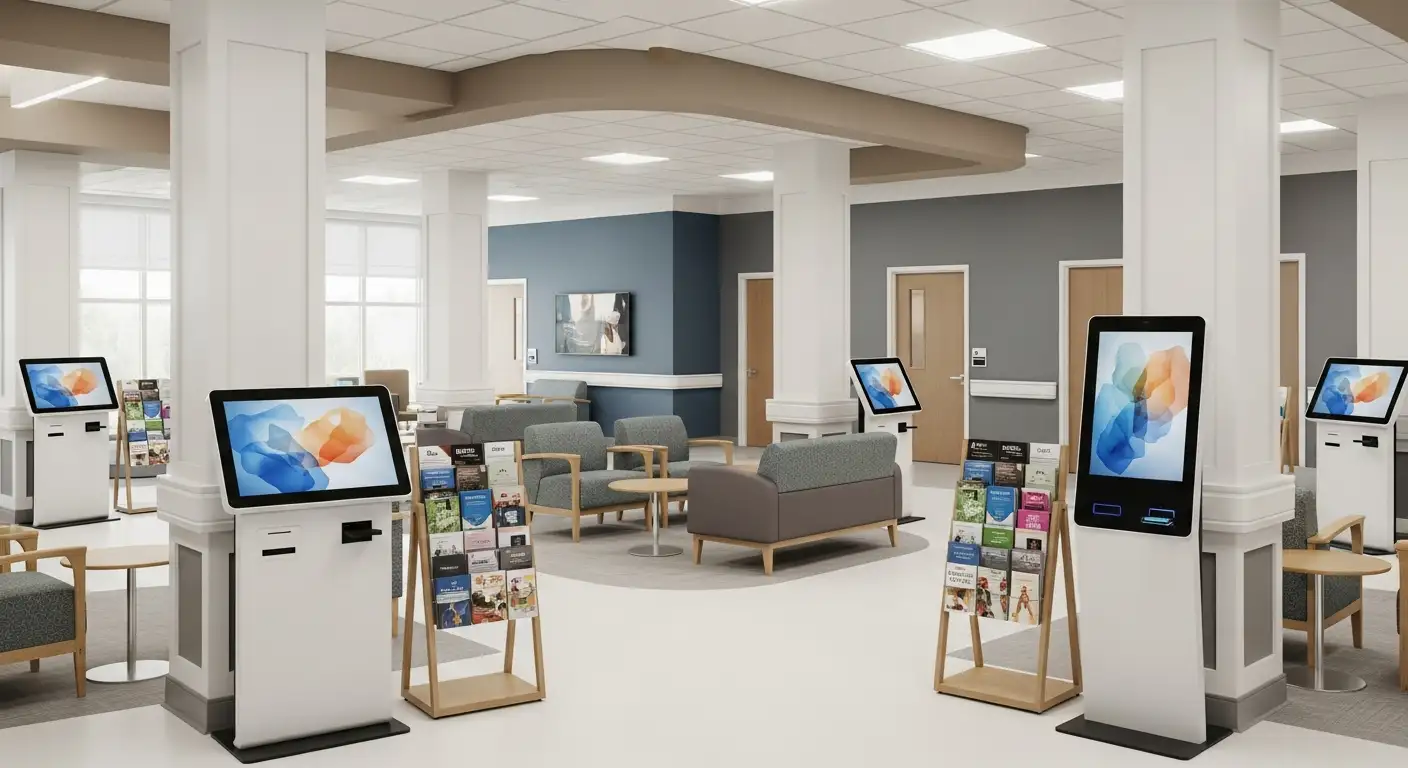Hybrid Healthcare vs Traditional In-Person Care

Understanding the Shift Towards Hybrid Healthcare Models
The landscape of healthcare delivery is evolving rapidly, driven by technological advances and recent global health challenges. Hybrid healthcare, which combines traditional in-person services with telehealth and digital tools, is emerging as a flexible, accessible, and efficient approach to meet diverse patient needs. This comprehensive shift aims not only to enhance patient experience but also to address systemic issues like provider shortages, disparities in access, and rising costs. As digital transformation accelerates, understanding the components, benefits, and challenges of hybrid healthcare versus traditional models becomes crucial for healthcare providers, policymakers, and patients alike.
The Evolution and Rationale Behind Hybrid Healthcare

What is the historical context of healthcare delivery?
Historically, healthcare delivery primarily relied on in-person visits, where patients visited clinics, hospitals, or medical offices for consultation, diagnosis, and treatment. This model emphasized face-to-face interactions, physical examinations, and immediate interventions. Over time, technological advancements introduced alternative methods such as telephone consultations and remote monitoring, but these were often limited to specific use cases.
The traditional model faced challenges including long wait times, geographical barriers, transportation issues, and limited access in rural or underserved areas. As healthcare systems grew more complex and resource-constrained, there was an increasing need to improve accessibility, efficiency, and patient engagement.
How did the COVID-19 pandemic impact healthcare models?
The COVID-19 pandemic drastically accelerated the adoption of digital health solutions worldwide. With restrictions on in-person visits to prevent virus spread, healthcare providers sought innovative ways to maintain continuity of care.
This crisis led to a rapid expansion of telemedicine, supported by policy changes and increased insurance coverage for virtual services. Healthcare systems adapted by integrating telehealth platforms, remote patient monitoring, and digital communication tools, fundamentally altering service delivery paradigms.
The pandemic illuminated both the potential and limitations of virtual care, highlighting disparities due to technology access and digital literacy, especially among older adults and minority populations.
How did hybrid care develop during health crises?
During the pandemic, healthcare institutions began developing hybrid care models that blend in-person and virtual services to meet diverse patient needs. These models offered flexibility, allowing providers to triage cases effectively—reserving in-person visits for complex or acute conditions while managing routine follow-ups remotely.
Innovations such as virtual hospitals, remote ICU monitoring, and home hospitalization units emerged as part of this hybrid approach. For example, Israel's Sheba Medical Center launched Sheba Beyond, a virtual hospital facilitating remote care and home hospitalization for stable patients, optimizing ICU resources.
This evolution demonstrated that hybrid models could improve patient outcomes, enhance system capacity, and address disparities by expanding care accessibility. As a result, health systems began formalizing these approaches, integrating digital tools into routine practice, and preparing for a resilient healthcare future post-pandemic.
Effectiveness and Clinical Outcomes of Hybrid Care Modalities

How effective is telehealth when integrated within hybrid healthcare models?
Telehealth, as part of hybrid healthcare models, has proven to be highly effective across various medical conditions and patient populations. Large-scale clinical trials and systematic reviews have shown that telehealth delivers care quality comparable to traditional in-person visits. In particular, randomized studies involving patients with chronic illnesses, mental health disorders, and cancer have demonstrated similar or improved health outcomes, with added benefits such as increased convenience and patient engagement.
For example, a notable clinical trial involving 1,250 patients with advanced lung cancer across multiple U.S. sites found no significant difference in quality of life improvements between telehealth and in-person palliative care, highlighting that virtual care can effectively support complex conditions.
The integration of telehealth into hybrid models allows for better remote monitoring, prompt interventions, and ongoing patient support. These benefits are especially crucial for populations in rural or underserved areas, where access to specialists and frequent visits pose challenges. The flexibility of hybrid care can reduce unnecessary hospital visits, shortening recovery times and improving overall health management.
Patient satisfaction surveys indicate high acceptance of hybrid care approaches, with many patients valuing the convenience and reduced travel requirements. Studies also show increased engagement, as technology-supported care enables patients to adhere better to treatment plans and participate actively in their health management.
Moreover, hybrid models have demonstrated potential in reducing healthcare disparities. Evidence suggests that virtual care bridges gaps in access, especially for patients with mobility issues, those living in remote areas, or populations facing socioeconomic barriers. The use of telehealth ensures continuous care, fosters stronger patient-provider relationships through varied communication channels, and allows health systems to deliver timely, personalized interventions.
In summary, the clinical effectiveness of telehealth within hybrid care models is well-supported by research. It enhances patient outcomes, maintains care quality, and promotes health equity by addressing access barriers. As healthcare increasingly adopts digital platforms, hybrid modalities are expected to become integral to future healthcare delivery, providing effective, patient-centered, and accessible care options.
Core Components and Implementation Strategies
What components are involved in implementing a hybrid healthcare system?
Creating a hybrid healthcare system requires a combination of technological, infrastructural, and procedural elements. Central to this is the deployment of robust digital infrastructure, including telehealth platforms, remote patient monitoring devices, and electronic health records (EHRs). These tools enable seamless communication and data sharing across different care settings.
Staff training and workflow redesign are equally important. Healthcare professionals must adapt to new technologies and develop integrated workflows that coordinate virtual and in-person care. This may involve learning new procedures for virtual consultations, remote diagnostics, and digital communication protocols.
Ensuring data security and privacy is vital in hybrid systems. Implementing secure communication channels, complying with privacy regulations such as HIPAA, and continuously monitoring for breaches protect patient information and build trust.
Customizing care pathways is another critical aspect. This involves tailoring interventions and service delivery modes to patient needs, which requires flexible scheduling systems, decision-support tools, and adaptable hospital and clinic design features.
To effectively implement hybrid healthcare systems, adopting frameworks like RE-AIM or CFIR helps evaluate and guide each stage—from adoption and implementation to sustainability and continuous improvement. Combining these components fosters an integrated, patient-centered approach that enhances access, quality, and efficiency of healthcare services.
Challenges and Solutions in Hybrid Healthcare Adoption

What are some of the challenges faced in adopting hybrid healthcare models?
Implementing hybrid healthcare models involves navigating a variety of hurdles that can slow down or complicate integration. One of the primary challenges is technological barriers. These include issues related to data interoperability—that is, the ability of different digital systems to communicate effectively—and limitations in existing digital infrastructure. Such barriers can hinder seamless data exchange and coordination across multiple platforms.
Cybersecurity risks also pose significant concerns. As more health data moves online, protecting patient privacy becomes critically important. Data breaches, hacking attempts, and unauthorized access threaten the security of sensitive health information, making robust security measures essential.
The digital divide significantly impacts the equitable deployment of hybrid healthcare. Patients in underserved areas or with lower income levels may lack access to reliable internet, modern devices, or digital literacy skills. This disparity leads to inequalities in healthcare access, engagement, and outcomes.
Another challenge involves ensuring a smooth patient experience. Developing reliable, user-friendly platforms that facilitate easy navigation between digital and in-person care is crucial. Clear protocols are needed to determine when telehealth is appropriate versus when traditional face-to-face visits are necessary, especially for complex or severe medical conditions.
Organizational resistance and change management also hinder widespread adoption. Healthcare providers and staff may be hesitant to shift from familiar routines to new digital workflows. Resistance can stem from concerns about workflow disruptions, additional training requirements, or skepticism about the efficacy of remote care.
Regulatory and reimbursement issues further complicate the implementation. Variability in policies regarding telehealth billing, licensing, and legal liability creates uncertainty. Without clear, supportive regulations and consistent reimbursement models, providers may be less inclined to fully adopt hybrid approaches.
Finally, integrating diverse digital systems while maintaining the quality of care presents ongoing challenges. Ensuring that new tools complement existing workflows, training staff effectively, and monitoring the quality outcomes require dedicated effort and resources.
Addressing these issues is essential to realize the full potential of hybrid healthcare, enabling more accessible, efficient, and equitable patient care.
| Challenge | Description | Potential Impact |
|---|---|---|
| Technological barriers | Data interoperability, infrastructure, cybersecurity | Disrupted data flow, security risks |
| Digital divide | Unequal access to internet and devices | Healthcare disparities |
| Patient experience | Need for reliable, user-friendly platforms | Reduced engagement and satisfaction |
| Organizational resistance | Staff hesitation, workflow adjustments | Slower adoption, inefficiencies |
| Regulatory hurdles | Reimbursement policies, licensing | Financial and legal uncertainties |
| System integration | Combining multiple digital tools | Compromised care quality, staff training needs |
These challenges are intertwined, requiring coordinated solutions. Solutions include investing in secure, interoperable digital platforms; expanding internet access in underserved areas; providing comprehensive staff training; advocating for clear policies supporting telehealth reimbursement; and designing patient-centered interfaces. By systematically addressing these barriers, healthcare systems can foster sustainable and effective hybrid models that improve access, quality, and equity in care.
Hybrid Healthcare in Specialized Fields and Rural Settings
How is hybrid healthcare applied in specialized areas such as mental health or rural health?
Hybrid healthcare combines telehealth services with traditional in-person care to address specific needs in specialized fields like mental health and rural healthcare. In mental health, virtual consultations, including telepsychiatry and digital therapeutics, enable timely intervention, especially for individuals with anxiety, depression, or serious mental illnesses (SMI). These digital tools increase accessibility by reducing travel burdens, offering flexible scheduling, and fostering continuous engagement between patients and providers. Many practitioners support ongoing use of telehealth in mental health for its convenience and potential to close gaps in service.
In rural and underserved regions, hybrid models help bridge significant healthcare disparities caused by geographic isolation, limited provider availability, and transportation issues. Programs in states such as North Carolina, Vermont, and Missouri have demonstrated success by integrating virtual visits, remote monitoring, and home-based care. These initiatives improve early detection, ongoing management of chronic conditions, and timely interventions, ultimately reducing preventable deaths and hospitalizations.
While challenges such as reliable internet access and patient engagement remain, these models offer promising avenues for delivering equitable, high-quality specialized care. They support proactive health management, continuous monitoring, and better health outcomes for vulnerable populations, confirming hybrid healthcare’s vital role in advancing health equity.
Financial Impact and Future Outlook of Hybrid Care
How does hybrid healthcare impact healthcare costs and patient access?
Hybrid healthcare plays a significant role in shaping the financial landscape of medical services. By blending telehealth with in-person visits, it promotes more efficient resource utilization. Hospitals and clinics can shorten hospital stays by managing some conditions remotely, reducing the need for prolonged admissions. It also minimizes unnecessary in-person appointments, which can lower costs associated with physical infrastructure and staffing.
Beyond cost savings for providers, hybrid models greatly enhance patient access to care. Patients in remote or underserved areas benefit from reduced travel expenses and time off work, removing geographical and mobility barriers. This expanded reach ensures that more people can receive continuous and preventive care, especially for chronic diseases.
The integration of digital tools like remote monitoring and virtual consultations fosters higher patient engagement and adherence to treatment plans. This proactive approach can prevent complications, decrease emergency visits, and reduce hospitalizations, which are often expensive. Consequently, healthcare systems can respond more flexibly to peaks in demand, optimizing capacity and reducing operational costs.
Overall, hybrid care systems create value by lowering expenses while improving the quality and accessibility of care. They serve as a resilient model for future healthcare delivery—less costly, more inclusive, and adaptable to evolving patient needs.
Research and ongoing analysis show that these models are promising in balancing cost-efficiency with high-quality outcomes, setting a foundation for more sustainable healthcare systems in the future.
For further insights into the cost implications of hybrid healthcare models, searches using phrases like "cost implications of hybrid healthcare models" can provide comprehensive analyses and recent data on this evolving field.
The Future of Hybrid Healthcare: Trends and Best Practices

What are future trends and opportunities in hybrid healthcare?
Hybrid healthcare is set to evolve rapidly, driven by technological innovations and changing policy landscapes. One major trend is the increasing use of artificial intelligence (AI) and big data analytics to tailor treatments and predict health risks more accurately. Wearable devices and remote monitoring tools will allow continuous tracking of patient health outside clinical settings, making care more personalized.
Interoperability between telehealth platforms and electronic health records (EHR) will improve care coordination and reduce data silos. Technologies like virtual reality (VR), augmented reality (AR), and remotely operated robotic-assisted surgeries will expand treatment options, enabling complex procedures to be performed remotely or with enhanced precision.
Policy changes and reimbursement models are also evolving. Many governments and insurers are updating regulations to support sustainable hybrid models, ensuring that telehealth services are reimbursed fairly and securely. These shifts will facilitate broader adoption and investment in hybrid care infrastructure.
The expansion of specialized telemedicine services will offer more options for managing chronic and complex conditions. Hospital-at-home programs will grow, providing acute care in patients' residences, reducing hospital stays, and lowering healthcare costs.
Cross-border healthcare capabilities will improve, allowing patients access to expert providers worldwide. This approach can address specialist shortages and improve access in underserved regions.
Overall, future hybrid healthcare will emphasize patient-centered, efficient, and equitable care delivery. It aims to harness technological advances to improve health outcomes, reduce disparities, and create a more responsive and scalable healthcare system.
| Technology/Development | Impact | Future Possibilities |
|---|---|---|
| Artificial Intelligence | Personalizes care, predicts risks | Advanced diagnostic tools and decision support systems |
| Wearable and Remote Monitoring | Continuous health data collection | Real-time health insights and early intervention |
| VR/AR and Remote Surgery | Enhanced patient engagement | Expanding surgical capabilities remotely |
| Interoperability Platforms | Seamless data exchange | Integrated health ecosystems |
| Cybersecurity | Protects patient data | Improved standards and safer systems |
How do policy changes and reimbursement models influence hybrid healthcare?
Supportive policies and updated reimbursement strategies are vital for the sustainability of hybrid healthcare. Government agencies and insurance providers are increasingly recognizing telehealth's value, leading to expanded coverage and fair compensation for virtual visits.
This evolution reduces financial barriers for providers and patients, encouraging wider adoption. Clear guidelines and standards also ensure quality and safety, building trust in hybrid models.
How is patient-centered design shaping future hybrid strategies?
Future hybrid healthcare models prioritize personalization by involving patients actively in designing their care pathways. Digital tools enable customized treatment plans, remote monitoring, and flexible service delivery.
This approach fosters stronger patient engagement, improves satisfaction, and supports caregivers. Tailoring care to individual needs ensures better adherence and outcomes.
What standards and guidelines are emerging to support hybrid care?
Organizations like the CDC, CMS, and professional societies are developing standards for privacy, security, and quality assurance in hybrid systems. Guidelines on platform usability, clinician training, and data management help ensure consistency.
Standardized protocols facilitate smooth integration of virtual and physical services, assuring safety, confidentiality, and high-quality care.
As hybrid healthcare continues to grow, adherence to evolving standards will be essential for maintaining trust, safety, and effectiveness in this innovative care landscape.
Principles for Optimizing Hybrid Healthcare Systems
What are best practices for optimizing hybrid healthcare systems?
Optimizing hybrid healthcare systems involves multiple strategic approaches to ensure effective integration of virtual and in-person care. A fundamental step is to guarantee seamless integration between digital tools and traditional care environments. This requires both robust technology platforms and clear workflows that facilitate easy switching between virtual and physical visits.
Provider training is essential. Clinicians and support staff should receive regular education in telehealth competencies, such as virtual communication etiquette, technical troubleshooting, and patient engagement techniques. Continuous professional development helps maintain high-quality service and adapts to evolving technology standards.
Patient engagement and trust-building are central to successful hybrid models. Clear communication about the safety, privacy, and benefits of hybrid care options encourages patient participation. Simplifying appointment scheduling, follow-up procedures, and providing accessible technical support further enhances user experience.
Data security and regulatory compliance are critical components. Hybrid systems must prioritize privacy-first architectures, adhere strictly to health data regulations such as HIPAA, and implement security protocols that protect sensitive information from breaches.
To foster continuous improvement, healthcare providers should regularly evaluate hybrid models by collecting data on access, quality, safety, and patient satisfaction. Stakeholder feedback informs iterative adjustments, ensuring the system remains responsive to user needs.
Supporting staff with technical resources, including help desks and digital literacy training, aids in smoother adoption. Establishing governance layers and accountability structures helps monitor compliance and quality standards.
Employing a full-funnel, sequential testing approach allows healthcare organizations to pilot new strategies, gather insights, and scale successful innovations confidently.
In summary, designing patient-centered, secure, and adaptable hybrid care experiences—while supporting providers through education and robust infrastructure—maximizes benefits and addresses barriers, leading to resilient and effective healthcare delivery systems.
Embracing a New Era in Healthcare Delivery
As healthcare continues to evolve in the digital age, hybrid models stand out as the most promising approach to delivering accessible, efficient, and patient-centered care. By combining the strengths of traditional in-person visits with innovative telehealth solutions, hybrid healthcare holds the potential to improve health outcomes, reduce disparities, and make healthcare more adaptable to future challenges. Overcoming current barriers through strategic investments, policy support, and stakeholder collaboration will be essential to fully realize its benefits. The future of healthcare relies on embracing this integrated model, fostering continuous innovation, and prioritizing patient needs to shape a more resilient and equitable healthcare system.
References
- Comparing In-Person Only, Telemedicine Only, and Hybrid Health ...
- Telehealth Is Just as Effective as In-person Care, Study Finds
- Designing for flexibility in hybrid care services - PubMed Central
- Important Differences between Telehealth and In-Person Care
- Unify Virtual & In-Person Care Across Intake, Triage, & Treatment
- What Is Hybrid Healthcare? Tools, Benefits, and Solutions for Success
- Hybrid Healthcare - Provista
Recent articles
Want to Feel Better and Live Healthier?
Join hundreds of patients taking control of their health with personalized care that fits their life – not the other way around.
Rated 4.8/5 by 32+ customers







